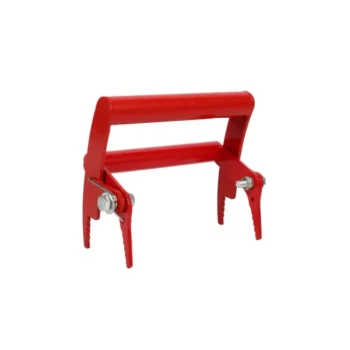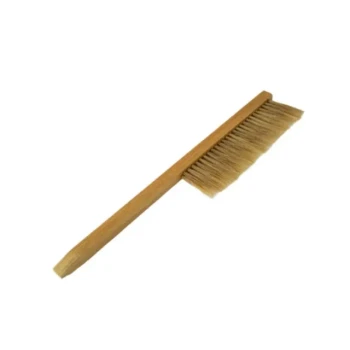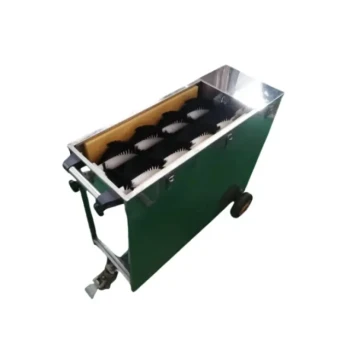The most common types of footwear for beekeepers are tall boots, closed-toe sneakers, or specialized beekeeping shoes. The primary goal is to select a shoe that protects your feet and, most importantly, allows you to create a secure seal between your footwear and your bee suit to prevent bees from crawling up your leg.
Your choice of footwear is less about a specific brand or style and more about fulfilling two critical functions: providing a solid, protective barrier for your feet and eliminating any gaps at the ankle where a bee could enter your suit.
The Core Principle of Beekeeping Footwear: Sealing the Gap
The most vulnerable point for a bee to enter your protective gear is often at the ankles. A single bee inside your suit can turn a calm inspection into a painful and stressful experience.
Why Foot Protection Matters
Your feet and ankles are common targets for stings if left exposed. A dropped frame or a defensive colony can result in bees on the ground, and sturdy footwear is your first line of defense.
The Critical Ankle Seal
The main objective is to close the gap between your shoe and the bottom of your pants or bee suit. Bees have an instinct to crawl upwards into dark spaces, making an unsealed pant leg an open invitation.
Material and Color
While not as critical as the seal, the material matters. Smooth surfaces like leather or rubber are preferable to mesh or fabric, as it's harder for a bee to get a foothold and sting through them. Light colors are also generally recommended as they are considered less threatening to bees.
Evaluating Your Footwear Options
Each common footwear choice offers a different balance of protection, comfort, and convenience.
Boots: The Gold Standard
Tall boots, particularly rubber wellingtons or leather work boots, are the preferred choice for many experienced beekeepers. Their height naturally covers the ankle and lower calf, making it very easy to securely tuck your bee suit into them. This creates an almost foolproof seal.
Sneakers: The Convenient Compromise
Standard sneakers are comfortable and readily available, but they present a significant vulnerability. Because they end at the ankle, you must take extra steps to seal the gap between the shoe and your pant leg.
Specialized Beekeeping Footwear
Some manufacturers offer boots or shoe-and-gaiter combinations designed specifically for beekeeping. These often feature integrated canvas gaiters that extend up the calf and zip or tie securely over your suit, offering a guaranteed, purpose-built seal.
Understanding the Trade-offs
Choosing the right shoe involves balancing absolute security with practical comfort and cost.
The Protection vs. Comfort Spectrum
Tall rubber boots offer maximum protection but can be hot, sweaty, and cumbersome during long summer days in the apiary. Sneakers are far more comfortable and breathable but require diligent attention to sealing.
The Sneaker Vulnerability
If you choose to wear sneakers, you must address the ankle gap. Beekeepers often use boot bands, elastic straps, or even duct tape to cinch the suit's pant leg tightly against the shoe. Simply tucking your pants into the sneaker is often not secure enough.
The Myth of "Sting-Proof"
No footwear is 100% "sting-proof." A determined bee can potentially sting through certain materials. The primary function of your footwear is to prevent access and provide a tough, thick barrier that makes stinging difficult.
Making the Right Choice for Your Apiary
Select your footwear based on the intensity of your beekeeping and your personal tolerance for risk.
- If your primary focus is maximum safety and frequent hive work: Choose a pair of tall, light-colored rubber or leather boots that allow you to securely tuck in your suit.
- If your primary focus is comfort for quick, infrequent inspections: Sneakers can suffice, but only if you use boot bands or another reliable method to completely seal the ankle gap.
- If your primary focus is an all-in-one, convenient solution: Invest in specialized beekeeping boots or shoe/gaiter combos that have a built-in sealing mechanism.
Ultimately, the best shoe is one that keeps you safe, comfortable, and confident while working with your bees.
Summary Table:
| Footwear Type | Protection Level | Key Feature | Best For |
|---|---|---|---|
| Tall Boots | High | Seals ankle gap easily | Frequent hive work, maximum safety |
| Sneakers | Moderate (with sealing) | Comfortable, breathable | Quick, infrequent inspections |
| Specialized Beekeeping Shoes | High | Built-in gaiters for secure seal | All-in-one convenience and protection |
Protect Your Apiary with the Right Gear from HONESTBEE
Choosing the correct footwear is critical for safe and efficient beekeeping. At HONESTBEE, we specialize in supplying high-quality beekeeping supplies and equipment designed specifically for the needs of commercial apiaries and beekeeping equipment distributors. Our products, including durable boots and protective gear, are built to provide the superior ankle seal and foot protection detailed in this article, helping you prevent stings and work with confidence.
Let us help you equip your operation with reliable, professional-grade footwear and supplies. Contact our wholesale team today to discuss your needs and discover how HONESTBEE can support your beekeeping success.
Visual Guide

Related Products
- Wholesales Dadant Size Wooden Bee Hives for Beekeeping
- Yellow Plastic Bucket Pail Perch for Beekeeping
- Long Langstroth Style Horizontal Top Bar Hive for Wholesale
- Heavy Duty Cowboy Beekeeper Hat with Visibility Veil Outdoor Professional Beekeeping Protective Gear
- Beekeeper Cowboy Hat and Veil for Beekeeping
People Also Ask
- What types of products are available for beekeeping needs? Essential Equipment for Apiaries & Distributors
- What are the characteristics of oil-based paint for beehives? Durability vs. Modern Practicality
- What should you do if you find an ant nest near your beehive? Essential Strategies for Hive Protection
- What are the advantages of wooden bee hives? Superior Bee Health & Beekeeper Flexibility
- Why were wooden hives traditionally preferred? For Natural Beekeeping Aligned with Bee Biology



















